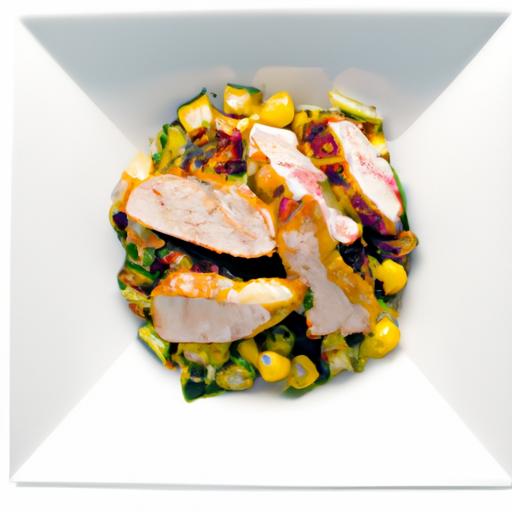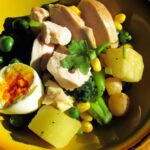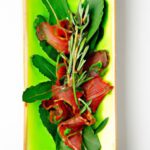In the timeless dance between nature and technology, drying methods for everything from herbs to fruits have long straddled two worlds: the patient embrace of air drying and the swift intensity of oven drying. Each technique unlocks unique secrets-air drying harnesses the gentle whisper of breezes and sunlight, preserving flavors and nutrients in their most natural form, while oven drying wields controlled heat to accelerate the process with precision and consistency. This article ventures into the heart of these contrasting methods, revealing how nature’s slow artistry compares with the modern efficiency of heat, and guiding you to choose the perfect drying approach for your culinary and preservation adventures.
Air Drying vs Oven Drying: Unlocking Nature’s vs Heat’s Secrets
Air drying vs oven drying presents a fascinating study in culinary preservation. Both methods hold unique powers: air drying gently captures nature’s essence, while oven drying harnesses the precision of heat to deliver speed and reliability. Whether you are preserving herbs, fruits, or vegetables, understanding these techniques empowers you to select the best approach for flavor, texture, and nutrient retention.
Prep and Cook Time
- Air Drying: 2-7 days, depending on humidity and ingredient thickness
- Oven Drying: 2-6 hours, with temperature variations based on ingredient
Yield
Varies based on quantity and ingredient density; typically reduces volume by 70-85%
Difficulty Level
Air Drying: Easy to Medium | Oven Drying: Medium
Ingredients
- Fresh produce for drying: herbs (such as rosemary, thyme, basil), fruits (apple slices, berries), vegetables (tomatoes, mushrooms)
- Lemon juice or ascorbic acid: optional, to preserve color and nutrients
- Cheesecloth or breathable drying racks: for air drying setup
- Parchment paper: for oven trays
- Food thermometer: recommended for oven drying precision
Instructions
- Prepare Your Ingredient: Wash fresh herbs or produce under cool running water. Pat dry gently with a clean towel to remove surface moisture.
- Air Drying Setup: Bundle herbs loosely and hang them upside down in a well-ventilated, dry area away from direct sunlight. For fruits and vegetables, arrange in a single layer on breathable racks covered with cheesecloth to prevent dust and insects.
- Oven Drying Preparation: Preheat your oven to a low temperature, around 135°F to 170°F (57°C to 77°C). Slice produce evenly, ideally 1/4 inch thick, ensuring pieces are uniform for even drying. Line baking sheets with parchment paper.
- Arrange and Dry: For oven drying, place sliced produce in a single layer on sheets. Leave oven door slightly ajar to allow moisture to escape, using a wooden spoon if necessary. Rotate trays every hour for consistent heat exposure.
- Monitor Drying: Check air-dried items every day for dryness level-herbs are ready when leaves crumble easily; fruits and vegetables should be leathery but not sticky. For oven drying, test pieces after 2 hours, continuing until ingredients reach the desired texture.
- Cool and Store: Allow dried items to cool completely at room temperature before transferring to airtight containers to maintain crispness and flavor.
Tips for Success
- Consistency Is Key: Uniform thickness ensures all pieces dry evenly, preventing mold or sogginess.
- Humidity Matters: Air drying is best in low-humidity environments; consider a dehumidifier or fan if indoors.
- Temperature Control: Avoid overheating during oven drying to preserve bright colors and nutrients. Use a food thermometer for accuracy.
- Pre-treatment: A light dip in lemon juice for fruits can slow enzymatic browning and retain vibrant colors.
- Storage: Use glass jars with airtight lids, and store in a cool, dark place to extend shelf life.
- Make-Ahead: Prepare large batches of air-dried herbs or oven-dried fruit chips to enhance pantry versatility.
Serving Suggestions
Dried herbs make excellent seasoning for soups, stews, or baked dishes-try a sprinkle of air-dried thyme over roasted potatoes for an aromatic boost. Oven-dried fruit slices transform into natural snacks or crunchy salad toppers. For a gourmet touch, use dried tomato chips as accompaniments to cheese boards or grind dried herbs into custom seasoning blends. Garnish with fresh microgreens to contrast texture and highlight your culinary artistry.

| Nutrient | Air-Dried | Oven-Dried |
|---|---|---|
| Calories | Concentrated +20% | Concentrated +18% |
| Protein | Minimal loss | Minimal loss |
| Carbohydrates | Concentrated | Concentrated |
| Vitamin C | Moderate retention | Reduced by 25-40% |
Mastering these drying techniques not only enhances your culinary creativity but honors the balance of nature and science. For more in-depth techniques on drying and preserving, visit USDA National Institute of Food and Agriculture. Explore additional recipes and tips on our Herbs Preservation Guide.
Q&A
Q&A: Air Drying vs Oven Drying – Unlocking Nature’s vs Heat’s Secrets
Q1: What is the fundamental difference between air drying and oven drying?
A1: Air drying is nature’s gentle whisper, letting time and ambient conditions slowly remove moisture from your ingredients. Oven drying, on the other hand, is heat’s purposeful command-using controlled warmth to quickly coax out moisture, accelerating the drying process.
Q2: Which method preserves nutrients better-air drying or oven drying?
A2: Think of air drying as a slow symphony, allowing delicate enzymes and vitamins to mostly stay intact, especially for herbs and flowers. Oven drying’s higher temperatures can sometimes diminish heat-sensitive nutrients but may better preserve others by halting enzyme activity swiftly.
Q3: How do texture and flavor differ between the two drying methods?
A3: Air drying yields textures that are often crisp but tender, with flavors unfolding subtly, like a natural perfume lingering in the breeze. Oven drying tends to create crunchier textures and more concentrated, intense flavors-sometimes caramelized hints dance within the heat.
Q4: Is safety a concern with either drying method?
A4: Absolutely. Air drying requires vigilant attention to humidity and airflow to prevent mold-a slow dance that demands patience. Oven drying’s high heat minimizes microbial risk, making it a faster, often safer bet if time is short and temperature carefully managed.
Q5: What types of foods or herbs are best suited for each method?
A5: Delicate herbs, flowers, and some fruits flourish with air drying, basking in the slow embrace of natural air currents. Oven drying shines with denser fruits, vegetables, and meats needing quicker moisture removal without compromising sanitary conditions.
Q6: How do environmental factors influence the choice between air and oven drying?
A6: Air drying is at the mercy of weather-humidity, temperature, and airflow dictate success, making it an outdoor or well-ventilated indoor affair. Oven drying is more reliable regardless of season, offering a controlled environment insulated from nature’s whims.
Q7: Can these methods be combined for better results?
A7: Indeed! Starting with air drying to gently reduce moisture, then finishing with a low-temperature oven session, can marry nature’s patience and heat’s precision-unlocking a texture and flavor profile that’s both nuanced and practical.
Q8: Which drying method is more energy-efficient?
A8: Air drying wins in energy terms-relying on natural elements without electricity. Oven drying, while faster, consumes energy but compensates with speed and consistency, crucial for large batches or time-sensitive projects.
Q9: In terms of historical or cultural traditions, how do these methods compare?
A9: Air drying carries the weight of tradition-ancient kitchens and hearths where herbs hung from rafters like garlands of wisdom. Oven drying is a modern-day ally, harnessing technological advances to respect those traditions while speeding up the process.
Q10: What’s the ultimate takeaway when choosing between air drying and oven drying?
A10: Deciding between air and oven drying is choosing between patience and speed, subtlety and intensity, nature’s rhythm and controlled energy. Embrace air drying when time and environment permit; call upon oven drying when precision and practicality lead. Both are secrets unlocked-tools to honor the essence of your ingredients.
To Wrap It Up
As we conclude our journey through the subtle dance between air drying and oven drying, it becomes clear that each method unlocks nature’s secrets in its own distinctive way. Air drying, with its gentle embrace of sun and breeze, preserves the quiet essence of ingredients, whispering tales of patience and tradition. Oven drying, on the other hand, harnesses the precise language of heat-speeding transformation with scientific prowess and control. Whether you choose the slow, soulful rhythm of nature or the swift, exact pulse of technology, understanding these methods enriches not just your culinary craft but your appreciation for the timeless dialogue between earth and fire. In the end, the secret is not just in the drying-it’s in the knowing.


